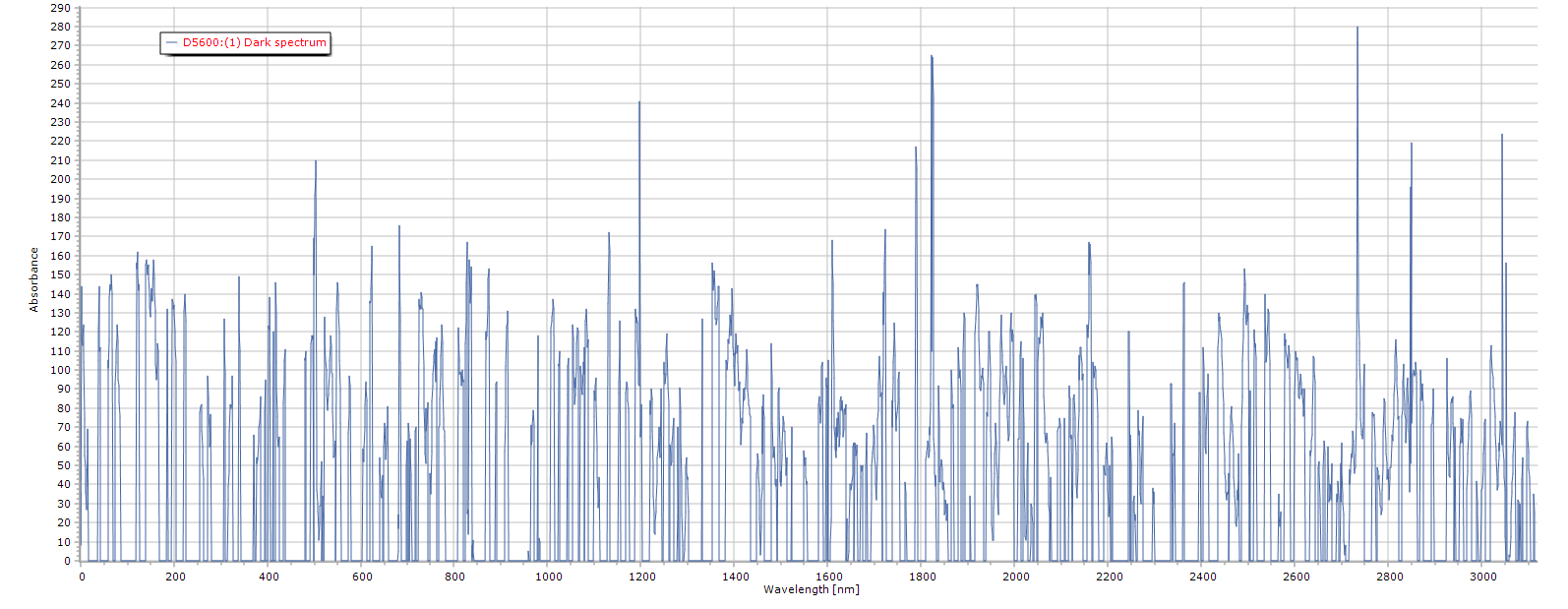*note, the term AOI means "angle of incidence." (the angle that an incident line or ray makes with a perpendicular to the surface at the point of incidence.)
This is pertaining to the diffraction grating.
Focal distance means the collmination of light focused from the mirror to the diffraction grating.
Ok, for this test I couldn't use the POF(plastic optical fiber,) or my regular fiber optical cable, but that's ok because this was purely an absorption test to prove how well my Nikon D5600 camera's sensor can resolve the peaks of a Holmium Oxide wavelength calibration standard as compared to using my previous ELP machine vision cam.
She blows it away! So, I am very confident now that when I put together all the components of this setup that I will be able to successfully resolve Raman peak signals @ the wavelengths according to the research paper upon which this project is based.
Kind of like verifying someone else's experiment, not that I don't believe them, but I've never had the chance before to verify someone else's work before and this is very thrilling to me :)
1st up are the RAW data files from RSpec, this is the reference spectrum (my Solux lamp.)

Next is the sample spectrum, Holmium oxide#2034. ( F/stop - 5.6/exposure time[1/10 sec] ISO - 12800
focal length - 34mm

This is the sample (Holmium oxide,) processed using Spectragryph 1.2.8

This is both the raw sample after it is divided by the reference spectrum (Solux lamp) and the smoothed sample (cleaned up,) caveat about using too much smoothing, every calculation of order removes a little bit of actual data so be careful and only use it if U really need to.

A Dark frame was also taken to subtract from both the sample and reference, in order to remove as much noise as possible.

In conclusion, here I was able to resolve 6 peaks with clarity just by using "free-air" light transmission and correct focusing. By using proper focusing and spectroscopy techniques a cmos sensor can certainly be utilized as a viable means of detecting not only wavelengths in the UV/VIS range but also in the Raman as well.
 David H Haffner Sr
David H Haffner Sr
Discussions
Become a Hackaday.io Member
Create an account to leave a comment. Already have an account? Log In.